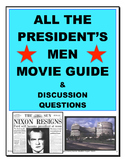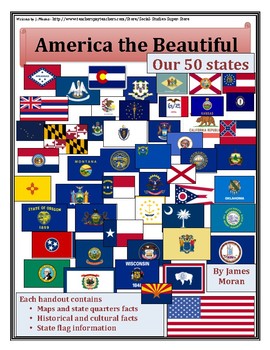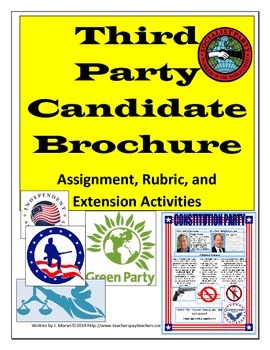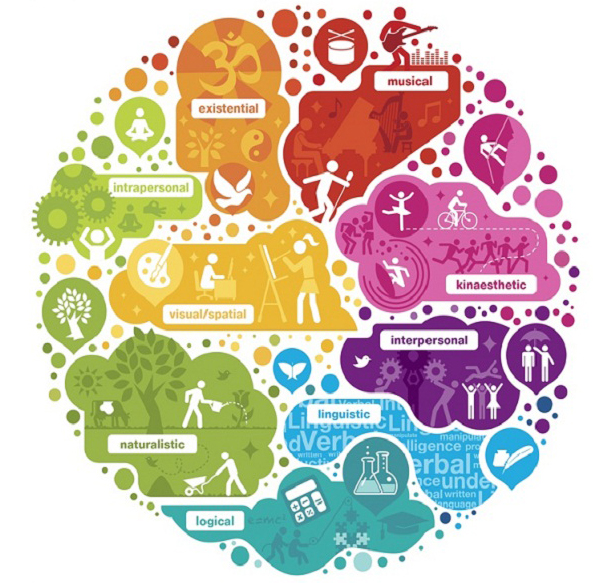I just watched the movie Bridge of Spies and it was a great historical movie. Even better a SUPER movie to show in my US History class - Cold War Unit. Why? Well, here are Five Reasons:
1) The movie does a great job of understanding how young people feared nuclear attacks during this time. On scene included Donovan's son preparing for a nuclear attack by filling up the bathtub full of water and encourages his father to stock up on food.
2) We see real life spy craft. The Soviet Spy uses a hollowed out nickel to place his secret coded messages in, and mysteriously the CIA knows how Donovan likes his coffee. We learn the details about the SUPER spy plane - U2.
3) We see the politics of the Cold War. East Germany wants to be recognized by the US and they are willing to use a prisoner exchange to get their way. At the same time, we get a glimpse of the burden the Soviet Union placed upon East Berlin after World War II.
4) The movie depicts the cold reality of the Cold War as Donovan witnessed the deaths of people attempting to escape over the Berlin Wall. This was the harsh reality of Cold War policies played out through the barrel of a gun.
5) The Bridge of Spies demonstrates how blind Americans were in their fear of Communism. Many times throughout the movie judges, attorneys, and other average Americans were so eager and willing to ignore basic constitutional ideals in the struggle to lock up the "bad guy". Might it happen again? These are great questions for our students.
Then to help your students to understand all these important ideas, feel free to use the SUPER video guide. It can be found at BRIDGE OF SPIES.
Saturday, February 27, 2016
Monday, February 22, 2016
FREE HISTORY/FOOTBALL LESSON
FREE! Yes, this is correct, a free activity. In honor of the end of the football season, I am giving away my Presidential Football Players mini-research activity.
This lesson engages those learners as they make the connection between the American Presidency and Football.
WHAT FUN ACTIVITY and it's FREE! But only for a limited time....
CLICK FOR THIS FREE ACTIVITY
Wednesday, February 10, 2016
Big 3 from Chapter 3 of "The Gift of Failure"
Here are the BIG three items I've reflected upon about Chapter 3....

#1 - Lahey points out that children need time to think and that mistakes are part of the process. She states, "...but if we show our kids that mistakes are part of the process of learning, they will be more positive about their abilities and better able to bounce back from mistakes in future attempts. If we teach them that messing up means the world will crumble around them, we only succeed in reinforcing fear of failure." Where do students learn when the complete a high stakes test?
#2 - Lahey says to "love them when they have messed up, because that's when they need our support the most." YES! I get this, and so do so many other teachers. But, what about the single parent who just come home from their second job, and they were hoping to get some rest. But, instead they come home to a wash machine over flowing with soap and suds as their child was trying to help with laundry. As I type this, I can say I might laugh. But that parent who is tired, and needing to deal with ANOTHER issue, they might not be very patient.
#3-The no brainer....give children chores to do at home. My sons have chores, but so many of my students do NOT have chores. Their parents do EVERYTHING for them. I understand that it might be easier to do the task yourself. But completing the task is not the issue. Rather give make the child a contributing member of the family. For later in their life, they will be contributing members of society. After all, the "the goal is for children to learn how to do for themselves, not for the task to get done."
What do you think?
Also, if you are looking for some SUPER no prep teacher activities or plans, visit the Social Studies Super Store.




#1 - Lahey points out that children need time to think and that mistakes are part of the process. She states, "...but if we show our kids that mistakes are part of the process of learning, they will be more positive about their abilities and better able to bounce back from mistakes in future attempts. If we teach them that messing up means the world will crumble around them, we only succeed in reinforcing fear of failure." Where do students learn when the complete a high stakes test?
#2 - Lahey says to "love them when they have messed up, because that's when they need our support the most." YES! I get this, and so do so many other teachers. But, what about the single parent who just come home from their second job, and they were hoping to get some rest. But, instead they come home to a wash machine over flowing with soap and suds as their child was trying to help with laundry. As I type this, I can say I might laugh. But that parent who is tired, and needing to deal with ANOTHER issue, they might not be very patient.
#3-The no brainer....give children chores to do at home. My sons have chores, but so many of my students do NOT have chores. Their parents do EVERYTHING for them. I understand that it might be easier to do the task yourself. But completing the task is not the issue. Rather give make the child a contributing member of the family. For later in their life, they will be contributing members of society. After all, the "the goal is for children to learn how to do for themselves, not for the task to get done."
What do you think?
Also, if you are looking for some SUPER no prep teacher activities or plans, visit the Social Studies Super Store.



Saturday, February 6, 2016
Three reasons Multiple Intelligence works in the classroom....
Lately, there has been some rumbling about the lack of evidence which Multiple Intelligence (MI) can play in benefiting students.
 I agree. The evidence seems to show little direct correlation between increase student achievement and the use of MI in the class.
I agree. The evidence seems to show little direct correlation between increase student achievement and the use of MI in the class.
But that being said, it is important to understand how key it is to use different learning modalities in the classroom. How breaking assignments into different learning styles breathes fresh air into the classroom. By understand MI learning styles a teacher's toolbox expands exponentially. Instead of simply having students complete a worksheet to demonstrate their understanding of a concept, students may draw a picture pf the concept, or create a song, or write a poem to demonstrate their understanding. In short, MI allows a teacher many resources to assess students learning.
Secondly, who does not love choices? With more tools in a teacher's box, the easier it is to give students choices. And, there is evidence to support student choices will raise achievement scores. Students are sold on the assignments since they have chosen the assignment to complete. So in my classroom students may write a poem about a key concept. I have a standard rubric which I use and I can easily modify it for a specific lesson. Or, students can demonstrate the ideas in a talk show format, or present it to the class in Google presentation. Again, I have rubrics which I can quickly modify for these assignments for a particular lesson. From the students perspective, the idea of choice is exciting. And, excitement in the classroom creates engaged students!
Finally, by using different learning modalities in the classroom, it allows students to demonstrate to their peers what their talent might be. In my tiny school, we do not have an art department. So those students who might excel in art do not have any way to show their peers their talent. But, when I give these students the opportunity to create a hand drawn postage stamp of a historical event, these students SHINE.
MI may not translates directly into greater achievements. Some studies have shown this. But, as we know, it can have a positive outcomes on our students lives and their learning. Different learning modalities is important to understand and use daily in our classrooms.
 I agree. The evidence seems to show little direct correlation between increase student achievement and the use of MI in the class.
I agree. The evidence seems to show little direct correlation between increase student achievement and the use of MI in the class.But that being said, it is important to understand how key it is to use different learning modalities in the classroom. How breaking assignments into different learning styles breathes fresh air into the classroom. By understand MI learning styles a teacher's toolbox expands exponentially. Instead of simply having students complete a worksheet to demonstrate their understanding of a concept, students may draw a picture pf the concept, or create a song, or write a poem to demonstrate their understanding. In short, MI allows a teacher many resources to assess students learning.
Secondly, who does not love choices? With more tools in a teacher's box, the easier it is to give students choices. And, there is evidence to support student choices will raise achievement scores. Students are sold on the assignments since they have chosen the assignment to complete. So in my classroom students may write a poem about a key concept. I have a standard rubric which I use and I can easily modify it for a specific lesson. Or, students can demonstrate the ideas in a talk show format, or present it to the class in Google presentation. Again, I have rubrics which I can quickly modify for these assignments for a particular lesson. From the students perspective, the idea of choice is exciting. And, excitement in the classroom creates engaged students!
Finally, by using different learning modalities in the classroom, it allows students to demonstrate to their peers what their talent might be. In my tiny school, we do not have an art department. So those students who might excel in art do not have any way to show their peers their talent. But, when I give these students the opportunity to create a hand drawn postage stamp of a historical event, these students SHINE.
MI may not translates directly into greater achievements. Some studies have shown this. But, as we know, it can have a positive outcomes on our students lives and their learning. Different learning modalities is important to understand and use daily in our classrooms.
Tuesday, February 2, 2016
5 Reasons to Use Crossword Puzzles In The Classroom NOW!
#1 Precision Counts: Is the answer "Second World War" or is it "World War Two"? Aren't these answers the same? No, not when you are completing a crossword puzzle. Student quickly understand that words matter and precise answers is important.
#2 Spelling Counts: Students can not wing it with misspelled answers when completing a crossword puzzle. If they try, their crossword puzzle will not be correct, or can not be completed.
#3 Critical Thinking is Important: I have one crossword puzzle dealing with American Presidents, and one clue reads, "This president's father served as the second American president." Wow! This question makes the students will think about the question. Crossword puzzle allow students to think deep and critical about the clues and answers. Other times the clues makes students think outside the box!
#4 Easy to Differentiate: For those students who excel, I give them a complete blank crossword puzzle. For those students who struggle, might give them a word bank. Other times, I might fill-in some of the letters or answers in the crossword puzzle. But, not matter crossword puzzles allow for easy modifications for all sorts of students.
#5 Easy to grade: Let's face it; crossword puzzles makes our job a little easier. In one glance you can see if the students completed the assignment correctly and completely. And, us teachers need a break every so often. :)
Are you looking for a few pre-made crossword puzzles? Check these out:

AMERICAN PRESIDENTS CROSSWORD PUZZLE

4 US Geography Crossword Puzzles

Latitude and Longitude Crossword Puzzle
Subscribe to:
Posts (Atom)


